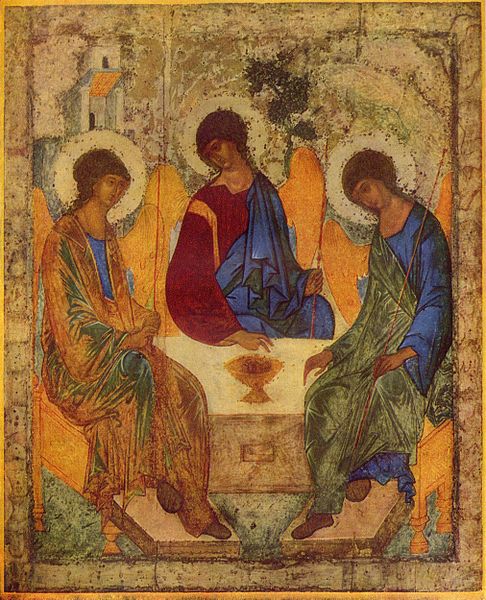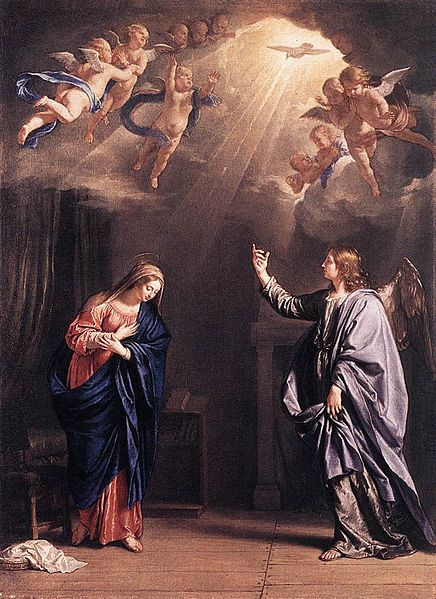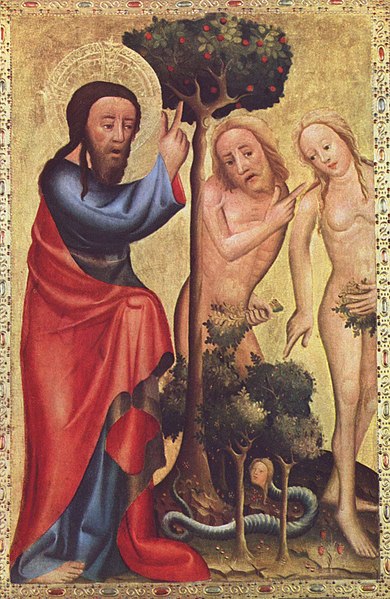Holy Spirit in Christianity
For the majority of Christian denominations, the Holy Spirit, or Holy Ghost, is believed to be the third Person of the Trinity, a triune God manifested as God the Father, God the Son, and God the Holy Spirit, each being God. Nontrinitarian Christians, who reject the doctrine of the Trinity, differ significantly from mainstream Christianity in their beliefs about the Holy Spirit. In Christian theology, pneumatology is the study of the Holy Spirit. Due to Christianity's historical relationship with Judaism, theologians often identify the Holy Spirit with the concept of the Ruach Hakodesh in Jewish scripture, on the theory that Jesus was expanding upon these Jewish concepts. Similar names, and ideas, include the Ruach Elohim, Ruach YHWH, and the Ruach Hakodesh. In the New Testament the Holy Spirit is identified with the Spirit of Christ, the Spirit of Truth, and the Paraclete (helper).

The Holy Spirit as a dove in the Heavenly Trinity, joined to the Holy Family through the Incarnation of the Son, in The Heavenly and Earthly Trinities by Murillo, c. 1677 [clarification needed]
The Holy Spirit as a dove in The Annunciation, by Philippe de Champaigne, 1644
Stained glass representation of the Holy Spirit as a dove, c. 1660
In the Farewell Discourse Jesus promised to send the Holy Spirit to his disciples after his departure; depiction from the Maesta by Duccio, 1308–1311.
The Christian doctrine of the Trinity is the central doctrine concerning the nature of God in most Christian churches, which defines one God existing in three coequal, coeternal, consubstantial divine persons: God the Father, God the Son and God the Holy Spirit, three distinct persons (hypostases) sharing one essence/substance/nature (homoousion). As the Fourth Lateran Council declared, it is the Father who begets, the Son who is begotten, and the Holy Spirit who proceeds. In this context, one essence/nature defines what God is, while the three persons define who God is. This expresses at once their distinction and their indissoluble unity. Thus, the entire process of creation and grace is viewed as a single shared action of the three divine persons, in which each person manifests the attributes unique to them in the Trinity, thereby proving that everything comes "from the Father," "through the Son," and "in the Holy Spirit."

Russian icon of the Old Testament Trinity by Andrei Rublev, between 1408 and 1425
God in the person of the Son confronts Adam and Eve, by Master Bertram (d. c. 1415)
Detail of the earliest known artwork of the Trinity, the Dogmatic or Trinity Sarcophagus, c. 350 (Vatican Museums) Three similar figures, representing the Trinity, are involved in the creation of Eve, whose much smaller figure is cut off at lower right; to her right, Adam lies on the ground
The Adoration of the Trinity by Albrecht Dürer (1511) From top to bottom: Holy Spirit (dove), God the Father and Christ on the cross








